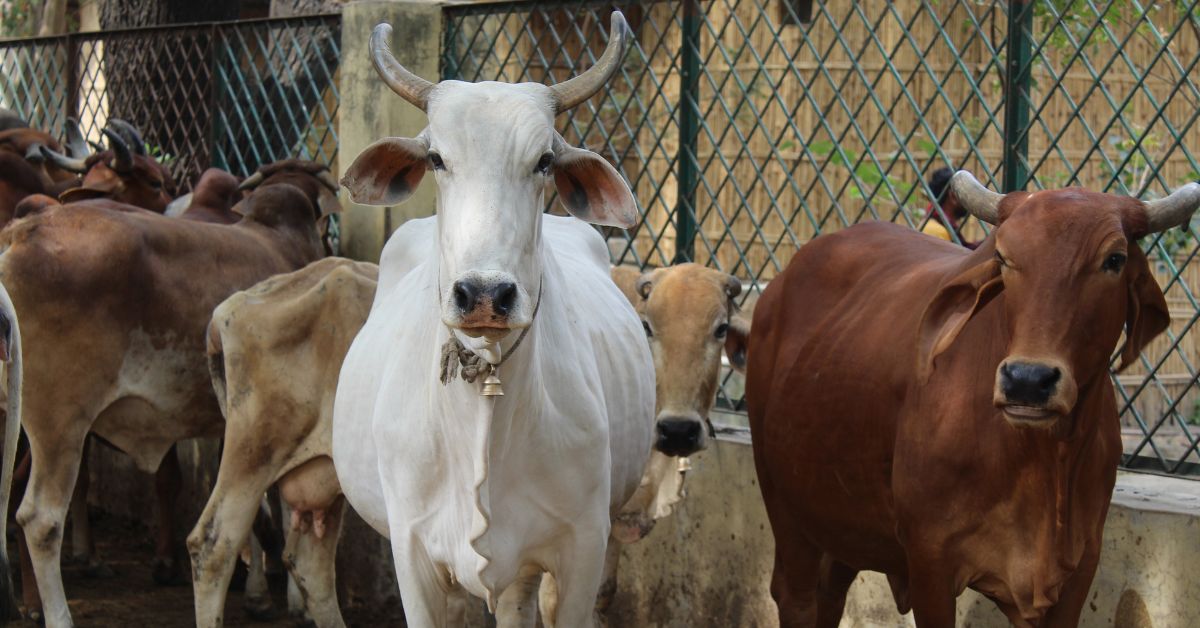🌿 How Ancient India Fought Germs Naturally – With the Wisdom of the Ages
- Admin
- Jun 5
- 3 min read
Imagine stepping into a traditional Indian home, where the floor glows with a soft sheen from neem water, utensils glimmer from a rub of ash, and the air carries a faint whiff of camphor, offering not just fragrance, but sacred protection.
No synthetic disinfectants.No chemical-heavy sprays.Just the deep-rooted harmony of nature and tradition — keeping spaces clean, sanctified, and alive.
Long before antiseptic gels and chemical cleansers occupied our shelves, Indian households had already cultivated a science of hygiene that was holistic, spiritual, and astonishingly effective. These weren’t just cleaning rituals — they were inherited values. From neem leaves and cow urine to ash and copper, our ancestors wielded the tools of nature with care, intuition, and reverence.
Let us walk through five such age-old practices that reveal not only cleanliness, but also a legacy of intelligent living — one that deserves remembrance, revival, and respect.

🌿 1. Neem Leaves — Nature’s Shield of Purity
In old Indian villages, neem trees were never just trees — they were guardians. Revered as sarva roga nivarini (remover of all diseases), neem leaves found their way into every nook of daily life: strewn at thresholds, placed in grain sacks, tucked into bedding, or boiled for floor cleaning.
What modern science now confirms — neem’s antibacterial, antifungal properties — was once simply trusted through generations of experience. Its presence brought not only pest control, but also a sense of serene protection.
💡 Neem Tip: Place dried neem leaves in closets, bookshelves, or rice containers to naturally ward off insects — just like our grandmothers did.
🐄 2. Cow Urine — The Sacred Sanitiser
To many, it may seem strange. But to traditional India, gomutra (cow urine) — especially from native Indian breeds — was a purifier, a protector. A key component of Panchagavya (five sacred substances from cows), it was used in daily floor mopping, ritual sprinkling, and spiritual cleansing.
More than a disinfectant, it was a bridge between household practice and sacred living. The cow, regarded as a mother, offered not just nourishment but spiritual hygiene.
💡 Modern Nod: If direct use seems difficult, consider eco-friendly bio-enzymes or herbal cleansers — inspired by ancient chemical-free formulas.

🔥 3. Ash — The Ancient Detergent
Before soaps and scrubbers, there was ash — simple, accessible, and ever-present in homes with wood-fired stoves. Collected from burnt wood or dried cow dung cakes, it was the humble agent used to clean dishes, floors, and even teeth.
Ash is naturally alkaline, mildly abrasive, and odor-neutralising — an organic alternative that never polluted, only purified. Even today, many rural homes still rely on it to scrub vessels to a clean shine.
💡 Ash Tip: If you have access to pure wood ash, try using it to polish brass or silver — a gentle, natural cleanser with a heritage touch.

🏺 4. Copper — The Silent Germ-Killer
Copper was never just a metal in ancient homes — it was a healer. Water stored in tamba (copper) vessels was believed to be naturally purified. Copper utensils adorned kitchens, altars, and doorways, believed to repel unseen impurities.
Modern microbiology affirms this — copper surfaces reduce microbial presence significantly. But for our ancestors, the belief ran deeper: copper was tamsik-harak (destroyer of darkness), both physical and spiritual.
💡 Copper Tip: Store your drinking water in a copper lota overnight. It balances pH, purifies naturally, and brings tradition back to your table.

🔥 5. Camphor — The Fragrance of Sanctity
Evening prayers in Indian homes often end with a softly flickering flame of camphor. But this wasn’t merely devotion — it was disinfection. Camphor smoke was used to cleanse indoor air, dispel negativity, and uplift mental clarity.
Burnt during seasonal shifts, after illnesses, or during festivals, camphor created an atmosphere of sacred calm — a space where health, spirit, and scent blended effortlessly.
💡 Camphor Tip: Light camphor once a week in a safe dish. It purifies air naturally, drives away pathogens, and replaces synthetic air-fresheners with sanctified simplicity.
🌸 Editorial Reflection: Reviving the Ancient Clean
In an age of automation and antiseptics, perhaps it’s time we revisit the quiet brilliance of our ancestors — who cleaned not just homes, but energies. Their wisdom teaches us that hygiene is not merely external, but sacred. That living in harmony with nature isn’t regressive — it’s regenerative.
When the modern world speaks of sustainability, ancient India whispers: We lived it.
Let’s not just remember these traditions — let’s bring them home again.Not for nostalgia, but for a future that is rooted, respectful, and refreshingly real.
✍️ - Inspired by timeless Indian traditions and reimagined for mindful living.

Comments